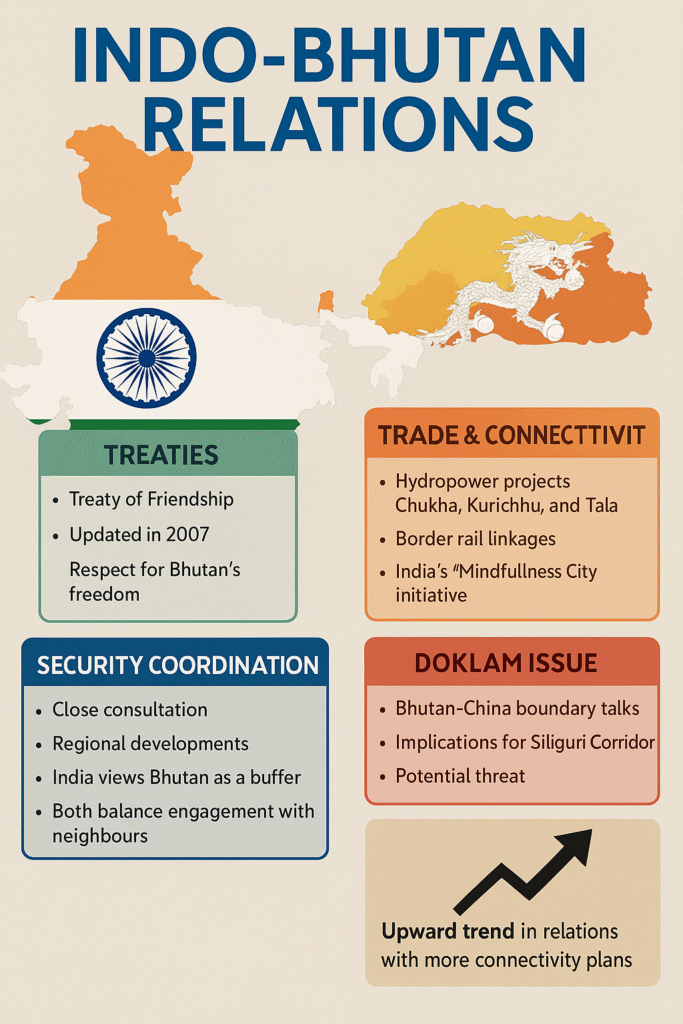Indo-Bhutan Relations: A Timeless Partnership of Trust and Cooperation

INDO-BHUTAN
Prime Minister Narendra Modi’s two-day visit to Bhutan. Both countries signed several MoUs covering renewable energy, health and medicine. New Delhi reaffirmed its support for Bhutan’s 13th Five-Year Plan and its Economic Stimulus Programme. During the visit there was inauguration of the 1020 MW Punatsangchhu-II Hydroelectric Project. And also resumption of work on the 1200 MW Punatsangchhu-I Hydroelectric Project. India also gave ₹40 billion concessional Line of Credit to support new energy projects and ongoing infrastructure initiatives.
LEARNING FROM HOME/WITHOUT CLASSES/ BASICS
INDO-BHUTAN
India and Bhutan has a steadfast partnership. Both countries concluded the 1949 India-Bhutan Treaty of Friendship. This was upgraded in the 2007 Friendship Treaty. 2007 treaty replaced the earlier provision(1949) requiring New Delhi to “guide” Thimphu in foreign affairs. This reaffirmed India’s respect for Bhutan’s freedom to chart its own course. The ngultrum’s peg to the Indian rupee underpins stability
Connectivity and clean energy(336-MW power project in Chukha , the 60 MW Kurichhu Hydropower project, the Tala Hydropower (1,020 MW) project ) are the current pillars. India remains Bhutan’s top trade partner, accounting for over 80% of its overall trade. It has backed border-area linkages (including planned rail spurs such as Kokrajhar–Gelephu and Banarhat–Samtse). India expressed support for Bhutan’s Gelephu “Mindfulness City”—a signature, sustainable-growth initiative meant to catalyse investment and integrate with India’s Northeast.
Security coordination is the quiet constant. Both sides consult closely on regional developments, including and the broader Himalayan front. The dialogue underscores how India views Bhutan as a critical buffer and how Thimphu balances engagement with both neighbours.
Irritants exist in Indo-bhutan relations but managed.
Bhutan–China boundary talks, given implications for India’s Siliguri Corridor. China-Bhutan land swap at Doklam poses a potential threat. Both sides must ensure boundary agreement must not endanger neither the former’s sovereignty nor the latter’s security interests. Faster-moving Bhutan–China boundary negotiations could reshape the security geometry around Doklam and adjoining areas
Net assessment: India–Bhutan ties are in a strong “renewal” phase—buoyed by hydropower commissioning, fresh financing, and connectivity plans linked to Bhutan’s transformation vision.





0 Comments